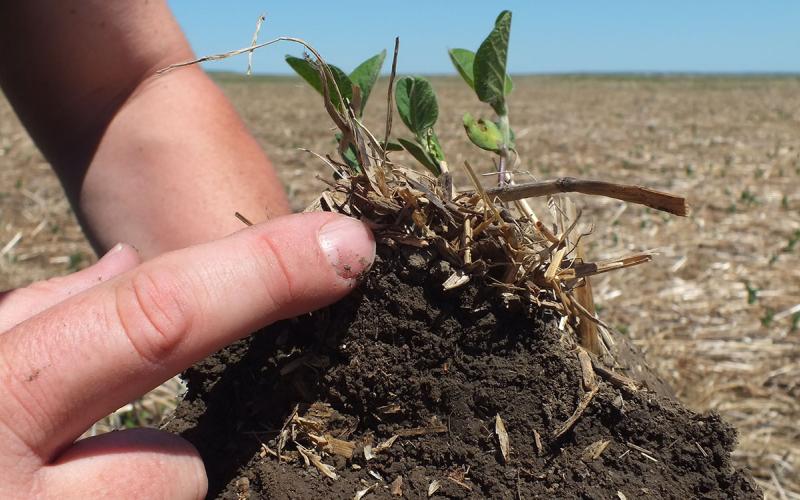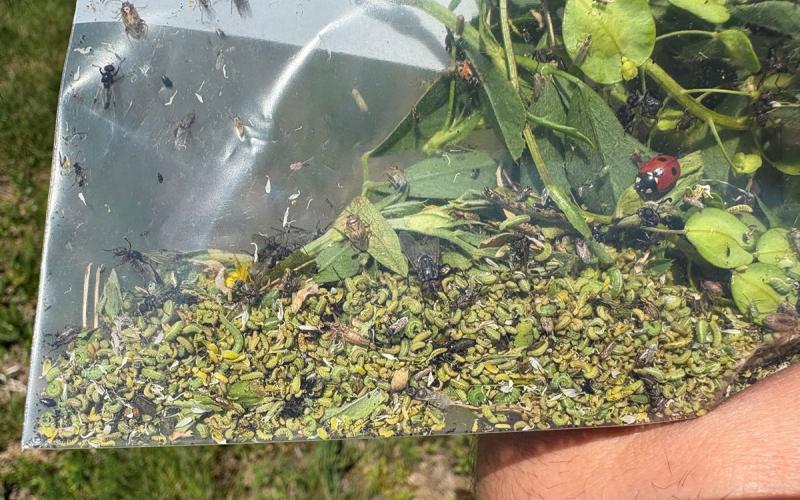
Dry spring weather across much of South Dakota has brought up some producer questions and inquiries about covering soils or extending the grazing/forage season with annual forages or cover crops. There are a few factors to consider.
Herbicide History
Before planting an alternative to your intended crop, consider your crop rotation, as well as haying/chopping and grazing restrictions of herbicides previously applied; this includes herbicides applied in the previous growing season. For more information check out the SDSU Extension herbicide carry-over fact sheet.
Purpose
Always begin with the end in mind. Livestock feed, soil health, weed suppression, nutrient capture, soil moisture management, additional harvested forage, and grazing may all be common reasons to plant a cover crop. Try focusing on your own objectives when creating a planting plan. The U.S. Department of Agriculture Natural Resources Conservation Service’s South Dakota Cover Crop Table lists common South Dakota cover crops and their purpose ratings, seeding rates and seeding depths. The Midwest Cover Crop Council also offers a Cover Crop Selector tool that can assist in choosing a cover crop mix in South Dakota and surrounding states based on grower goals and management practices.
Insurance and FSA Guidelines
Be sure to check with your insurance agent and Farm Service Agency representative on all details regarding the seeding of your cover crop or forage crop, especially following an insurance claim on your cash crop. Frequently asked questions and answers regarding insurance can be found on the Risk Management Agency website.
Seed Availability and Price
Each year, demand for annual forage/cover crop seed varies, and some species may have risen in price due to demand. Although most producers want to keep costs low, do remember that forage crops and/or improved soil health comes at a price, and some investment will be necessary.
Crop Rotation
Keep your previous crop and intended crop for next season in mind; it is generally recommended to plant cover crops with various growth habits that are complementary to the subsequent cash crops; for example, broadleaves prior to grass cash crops and vice versa.
Termination
Many cover crops will winter kill or die after a late chopping. However, some species may survive the winter, such as cereal rye, winter wheat, triticale, and others. Some species, like vetch and Italian ryegrass, can stay dormant for a prolonged period (hard seed) and germinate the following spring. This does not eliminate these crops as an option; it simply requires prompt spring attention and management, as these species may use valuable spring moisture intended for a cash crop. Conversely, they are helpful in taking up moisture during a wet spring.
Weed Control
When planting a cover crop mix, it can be nearly impossible to chemically control weeds during the growth of the cover crop. A thorough burndown before planting helps with weed suppression in problem areas. Cereal/winter rye is known for its inherent allelopathic characteristics, or its ability to suppress weeds by the production of biological chemical substrates that are harmful to other surrounding species. Other cool-season grasses and sprawling, or more ground covering, broadleaf crops (such as vetches, or radish and turnip) can also aid in weed suppression.
Soil Fertility
Generally speaking, if a producer is intending to use cover crops as forage, applying lower rates of nitrogen at planting can be cost-effective in the end. Consider previous crop credits (if legumes were planted) and current soil test levels. In many situations, low nitrogen application rates (30 to 60 pounds per acre) will provide considerable growth for cover crops (especially grasses). In drought situations, it is important to consider whether nitrogen fertilizing combined with dry conditions could cause high nitrate build-up in the plant. Therefore, if planting a forage crop after harvesting a cash crop that was salvaged for feed, no nitrogen fertilizer may be recommended. Knowing your soil test levels and monitoring the field as plants progress is a best practice in determining whether additional fertilizer may be needed. Check the South Dakota Fertilizer Recommendations Guide for suggested soil fertility guidelines for major South Dakota crops.
Planting Time
Warm-season species (such as forage sorghums, sorghum-sudangrass, buckwheat, sunflower, teff grass, and others) are ideally planted from late spring into early summer. After the third week of July, as average daily temperatures tend to decrease, cool-season species (such as small grains, peas, clovers, vetch, and brassicas) are recommended instead. If dry soils persist with no rain in the forecast, many producers choose to wait to invest in planting seed until the chance of moisture improves.
Choosing a Forage Species
Cool-season species that utilize less moisture than others and may handle moisture-stress well: forage barley (awnless), winter wheat, and forage oats. Drought-tolerant warm-season options include: hay millets, (pearl, foxtail, and proso handle drought well), forage sorghum, sudangrass, sorghum x sudangrass, or teff grass. Winter rye or winter triticale may provide grazing in the spring if adequate moisture is present. This does not mean other forage species cannot be planted, but be aware that some cover crops require more moisture than others.
Although there are many factors to take into consideration, annual forages and cover crops can be an excellent tool to boost forage production, reduce fallow acres, and enhance soil health. For more information, please do not hesitate to contact your nearest SDSU Extension Regional Center or your local NRCS office for cover crop/forage crop recommendations and other assistance.


